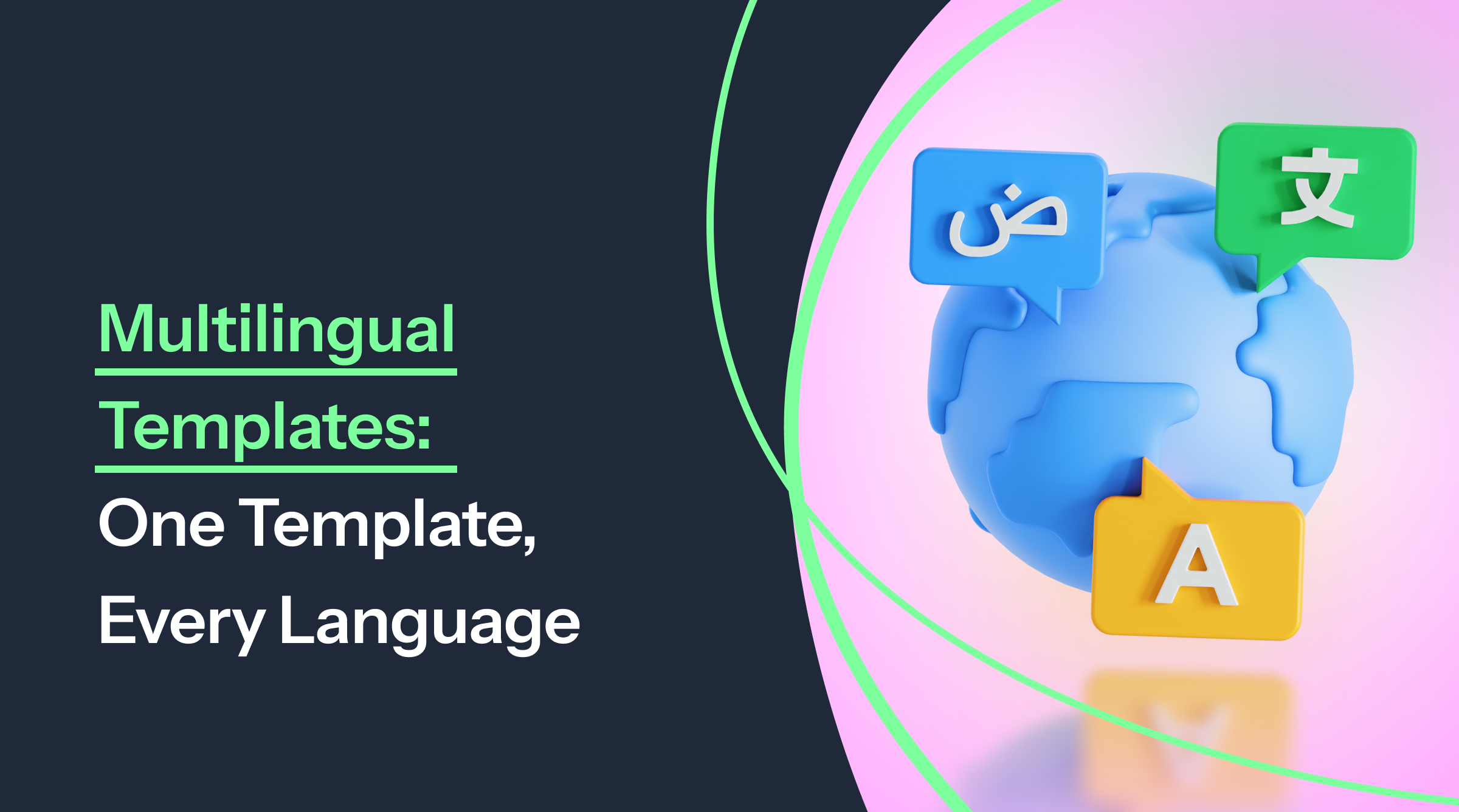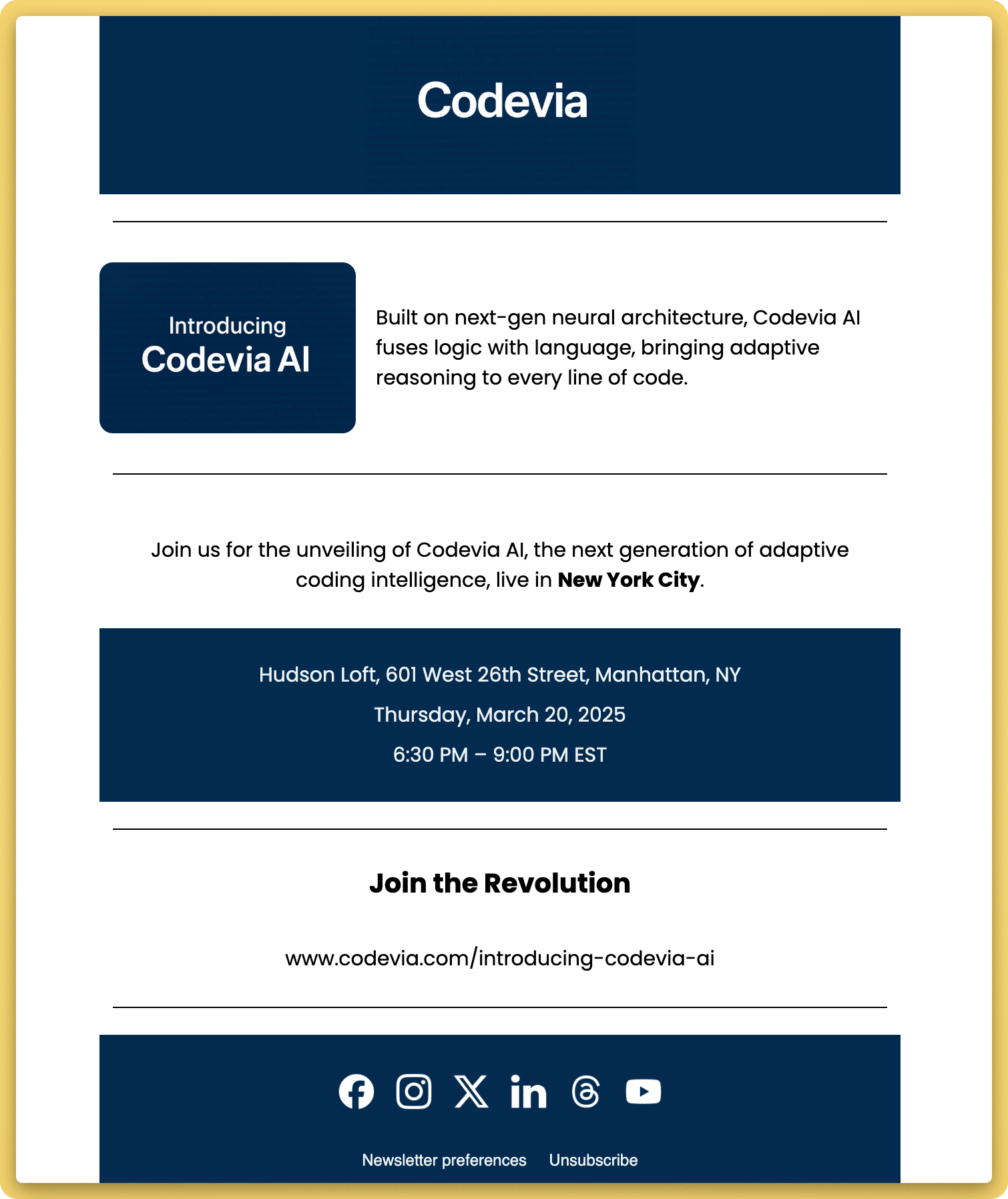Introducing Multilingual Templates: One Template, Every Language
Connecting with customers in their language has never been more important. However, for email marketers, creating multiple versions of the same campaign often involves duplicating templates, managing separate files, and risking inconsistencies. With Multilingual Templates, you design once, store all translations in one place, and handle every language variation within a single template. This streamlines production, reduces errors, and maintains consistent design across all audiences.

Why Multiple Languages Make Email So Messy
For organizations with a global audience, localization is essential. Subscribers expect to read in their preferred language, whether that’s Spanish, German, French, or English. The challenge is that each additional language requires creating a separate template, and a consistent campaign quickly becomes multiple versions that all need to be updated, monitored, and kept in sync.
As these versions pile up, inconsistencies are likely to occur. One might use the wrong image, another could still feature an outdated button style, and a third might completely lack the latest update. With each new version, the likelihood of inconsistencies grows.
Collaboration can make things even more difficult. Designers, marketers, and translators often work separately on their own versions of the same email. When those files are finally combined, small differences can appear, harming brand consistency across regions.
One Template, Unlimited Languages
With Multilingual Templates, you no longer need to manage separate files for each market. All language versions now exist within a single (multilingual) template. The overall design and layout are shared, while each version contains its unique, localized content. This can include translated headings, text, or region-specific images, videos, or links. This setup ensures your campaigns stay consistent while keeping translations separate and easy to manage.
Switching between versions in the editor happens instantly, allowing you to preview and edit localized content in context without juggling multiple files. Any change you make to the shared design, whether it’s adding a new section, updating a style, or replacing an image, is automatically reflected across all language versions, saving time and reducing mistakes.
This streamlines the process of expanding campaigns into new markets without redoing work. Instead of starting over, your team can focus on creating the right message for each audience, knowing that the structure and design will remain consistent.
How It Works in Practice
We’ve worked hard to make using Multilingual Templates in Topol PRO as effective and easy to manage as possible. Check out the following workflow example to see if we’ve reached our goal, or visit our Topol PRO documentation page for a detailed user guide.
1. Select the default language of your template
Select any of the 184 supported language options to create your template's primary version. The first language version you create is always labeled "Primary," meaning it determines the layout and content of your entire Multilingual template. Behind the scenes, each additional language version (which we will refer to as a mutation from now on) follows the layout from the primary version and stores only the translated content.
This also means you should always update the layout of the Primary template so that the change correctly propagates to all other language versions. Of course, you can also make any other language version your Primary at any time.
2. Design the Primary version of your Multilingual template
Create your original design of the Primary mutation as you normally do with our editor. Remember that any additional mutation you create will always start from the design of the Primary mutation, so make sure it is polished.

3. Create different language versions
With the main mutation developed and refined, it's time to create a mutation in another language. In our example, we'll produce a French version of our template, which originally had an English primary version.
Although we created the French mutation, visually, nothing changed. This is because, as mentioned before, all additional mutations always start by copying the design of the primary version. Now, it's time to localize it!
4. Translate the content of each language version
In our demonstration, we're creating a French version of our primary English template. So, we select the French mutation from the dropdown, and then we can start translating! For example, you can adjust the content or style of any Text, Button, or Image block, or even the code within an HTML block, and all these changes will remain within this specific mutation. This way, you can create as many mutations of the primary version as you need.
5. Switch between mutations on the fly
Create two, five, or twenty different mutations of your primary template - the editor handles it all effortlessly! Switching between language versions is lightning-fast, enhancing your workflow and allowing you to review all language versions of your template in seconds.
6. Change in one place, see the change everywhere
The main advantage of using Multilingual templates is the ability to update the layout of all mutations simultaneously by making changes in just one place - the primary template. Whether you need to add, remove, or change the type of a block, adjust the number of columns within a structure, or modify its background color, you can do it in the primary template. All mutations will be automatically updated instantly.
Smarter Workflows for Every Team
Multilingual Templates make it easier to manage the kinds of emails that most often need localization:
Marketing campaigns
Seasonal promotions, product launches, or special offers can be created once and then localized quickly. Instead of copying the same design for each market, you add translations within the same template, ensuring updates stay consistent across all versions.
Transactional emails
Receipts, confirmations, or account notifications require accuracy. By storing each translation in a single structure, these essential emails consistently keep the same design while making sure customers get them in their preferred language.
Event communications
Invitations, reminders, and agendas often change at the last minute. With Multilingual Templates, updates to the main template, such as a new start time or location, automatically update all localized versions, ensuring no one receives outdated details.
Company-wide announcements
HR updates, compliance notices, or training invitations can be created once and translated into multiple languages without managing multiple files. This helps multinational companies keep all employees aligned.
Who Benefits Most from Multilingual Templates
Different teams see different types of value from this feature:
Marketers
Marketers gain efficiency and control by working from a single master template. Campaigns scale faster because the design is centralized, and errors are reduced since updates happen in one place instead of across multiple files.
Agencies
Agencies can deliver localized campaigns to clients more quickly and with less manual effort. Using one template for all languages enforces brand standards across every market, which makes client approvals smoother and quality more consistent.
Global teams
Global teams collaborate more effectively when everyone works inside the same structure. Designers control layouts, translators focus on copy, and marketers oversee campaigns. This clear division of roles reduces mistakes and speeds up delivery.
CRM and operations teams
CRM and operations teams strengthen the reliability of critical communications, such as receipts, confirmations, and system updates. Policy changes, updated links, or new contact details are applied once and instantly reflected across all language versions.
Available Now in Topol PRO
Multilingual Templates are now accessible in Topol PRO and will soon be released for the Topol Plugin. Explore the feature in your PRO account, create your first multilingual template, and discover how simple it is to manage multiple languages in one place. If you ever feel lost during the process, consult our Topol PRO documentation.
This is not just an upgrade; it’s a shift in how global email marketing can be done. One design, every language, perfectly aligned.
Start using Multilingual Templates today and make your next campaign truly global.

